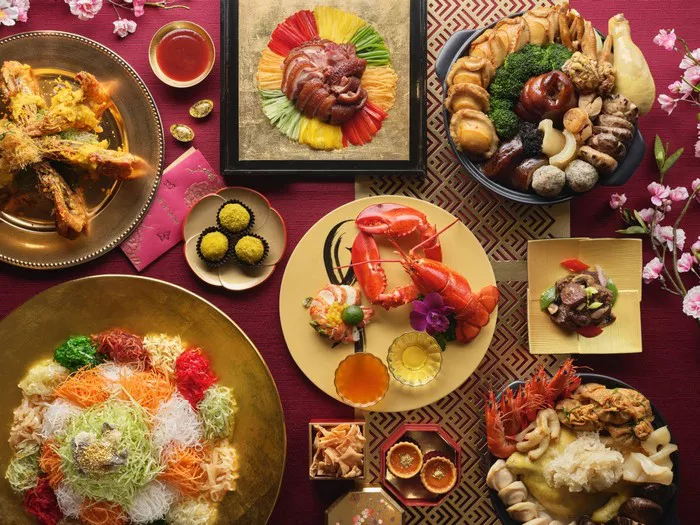Chinese cuisine, celebrated for its diversity, depth, and exquisite flavors, boasts a history that spans thousands of years. As one of the world’s oldest and most influential culinary traditions, Chinese cuisine has evolved through numerous dynasties, geographical regions, and cultural influences. In this article, we embark on a gastronomic journey through time, tracing the rich and intricate history of Chinese cuisine, from its humble beginnings to its current global prominence.
Ancient Origins of Chinese Cuisine
Chinese cuisine finds its origins in the Neolithic period, with evidence of primitive cooking techniques dating back over 8,000 years. Early Chinese societies primarily relied on hunting, gathering, and simple forms of agriculture, which laid the foundation for the diverse culinary landscape we see today.
The hallmark of Chinese cuisine’s early development was the invention of various culinary techniques, such as stir-frying, steaming, and fermentation. These techniques not only shaped the distinct flavors and textures of Chinese dishes but also contributed to the longevity of the cuisine.
The Birth of Culinary Traditions: Zhou Dynasty to Han Dynasty
The emergence of the Zhou Dynasty (1046–256 BCE) marked a significant turning point in the history of Chinese cuisine. During this period, food and culinary traditions became an integral part of Chinese culture and society. The principles of harmony and balance, which are central to Chinese cuisine, began to take root.
The development of the “Five Flavors” theory—sour, bitter, sweet, pungent, and salty—played a pivotal role in Chinese culinary philosophy. It was during this time that the art of seasoning and combining flavors to create a harmonious balance became a cornerstone of Chinese cooking.
The subsequent Han Dynasty (206 BCE–220 CE) witnessed further advancements in Chinese cuisine. Noodles, a staple of modern Chinese cuisine, were believed to have been invented during this period. Fermentation techniques, such as brewing soy sauce and developing various pickled foods, also flourished during the Han Dynasty.
Silk Road Influences: Tang Dynasty to Yuan Dynasty
The Tang Dynasty (618–907 CE) was a golden era for Chinese cuisine, marked by the exchange of culinary knowledge along the Silk Road. Spices and ingredients from distant lands, such as India and Persia, enriched the Chinese culinary landscape. This era witnessed the introduction of foreign flavors, aromatics, and cooking techniques.
One of the most notable imports during this period was tea. Tea culture became an integral part of Chinese life, eventually evolving into a distinct cuisine, complete with its own set of traditions and rituals.
The Song Dynasty (960–1279 CE) saw the development of culinary texts, the most famous of which is “The Imperial Court’s Culinary Artistry” written by renowned chef Hu Sihui. This book not only documented the elaborate culinary practices of the time but also emphasized the importance of nutrition and balanced diets.
The Mongol-led Yuan Dynasty (1271–1368 CE) introduced Central Asian flavors to Chinese cuisine. One enduring legacy of this era is the hot pot, a communal dining experience where thinly sliced meat and vegetables are cooked in a simmering broth at the table. Hot pot remains a beloved dining tradition in modern China.
Innovation and Refinement: Ming Dynasty to Qing Dynasty
The Ming Dynasty (1368–1644 CE) marked a period of culinary refinement and innovation. Intricate cooking methods, such as slow braising and delicate presentation, were developed during this time. The Ming Dynasty also saw the rise of teahouses and the emergence of regional cuisines, each with its unique characteristics and ingredients.
The Qing Dynasty (1644–1912 CE) brought about further diversification in Chinese cuisine, with the Manchu influence introducing new ingredients like soybean-based products, such as tofu and soy milk. These additions became integral to many Chinese dishes and remain staples to this day.
Chinese Cuisine Goes Global: The Modern Era
The 19th and 20th centuries were marked by significant changes in Chinese cuisine, both within China and around the world. The Opium Wars, the Taiping Rebellion, and the Cultural Revolution had profound impacts on Chinese society, including its culinary traditions. The blending of regional cuisines and the adaptation of Chinese dishes to suit local tastes became prominent.
Chinese immigrants brought their culinary traditions to various parts of the world, leading to the proliferation of Chinese restaurants and the development of “Chinese-American” and “Chinese-Canadian” cuisines. These adaptations often fused Chinese flavors with local ingredients and preferences, giving rise to dishes like General Tso’s Chicken and Chop Suey.
In China itself, the modern era has seen a revival of interest in traditional culinary arts. Ancient recipes and cooking techniques have been meticulously preserved and rediscovered, leading to a resurgence of regional cuisines and the appreciation of time-honored dishes.
The Global Influence of Chinese Cuisine
Chinese cuisine’s reach extends far beyond China’s borders, making it one of the most influential culinary traditions in the world. Chinese restaurants can be found in nearly every corner of the globe, and Chinese culinary techniques and ingredients have made their way into the kitchens of many cultures.
Chinese cuisine has inspired countless chefs and food enthusiasts, leading to the fusion of Chinese flavors with other culinary traditions. The concept of “fusion cuisine” has given rise to innovative dishes that combine the best of Chinese cooking with elements from other cultures.
Key Elements of Chinese Cuisine
As we explore the extensive history of Chinese cuisine, it’s essential to understand the fundamental elements that define its character and enduring appeal:
Regional Diversity: China’s vast size and diverse geography have given rise to a multitude of regional cuisines, each with its unique ingredients, flavors, and cooking techniques. Examples include Sichuan cuisine, known for its bold and spicy flavors, and Cantonese cuisine, celebrated for its emphasis on freshness and subtlety.
Balance and Harmony: The concept of balance is central to Chinese cuisine. Traditional Chinese dishes aim to balance flavors, textures, and colors to create a harmonious and satisfying meal. The “yin and yang” philosophy is often applied to cooking, ensuring that a dish is neither too salty nor too sweet, too spicy nor too bland.
Seasonality: Chinese cuisine places a strong emphasis on using seasonal ingredients to ensure freshness and flavor. The availability of ingredients varies throughout the year, influencing the dishes prepared during each season.
Cooking Techniques: Chinese cuisine is renowned for its mastery of various cooking techniques, including stir-frying, steaming, braising, deep-frying, and roasting. Each method is chosen to enhance the flavor and texture of specific ingredients.
Umami: Chinese cuisine excels in capturing the fifth taste sensation, umami, which is often derived from ingredients like soy sauce, fermented bean pastes, and aged vinegars. Umami-rich elements add depth and complexity to Chinese dishes.
Symbolism and Tradition: Chinese cuisine is deeply rooted in cultural traditions and symbolism. Certain dishes and ingredients are associated with luck, prosperity, or special occasions. For example, dumplings are a symbol of wealth and unity, making them a common dish during Chinese New Year.
Communal Dining: Chinese meals are typically served family-style, with a variety of dishes placed in the center of the table for everyone to share. This communal dining style fosters a sense of togetherness and allows for a diverse range of flavors and textures in a single meal.
Conclusion
The history of Chinese cuisine is a testament to the culinary ingenuity and cultural richness of China. Spanning thousands of years, it reflects the evolution of a society, its traditions, and its interactions with the wider world. Chinese cuisine’s enduring appeal lies in its diversity, balance, and harmonious blend of flavors.






















